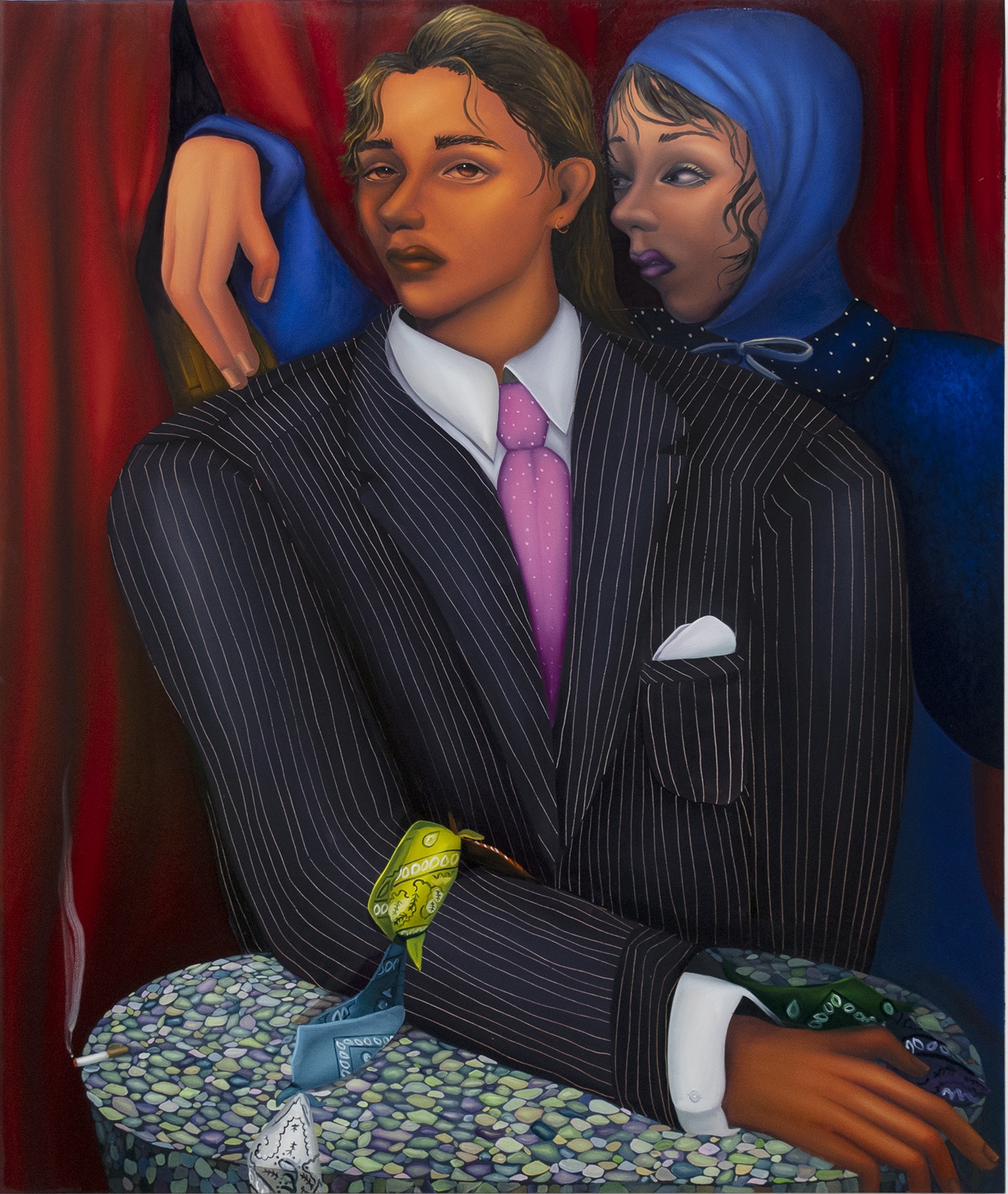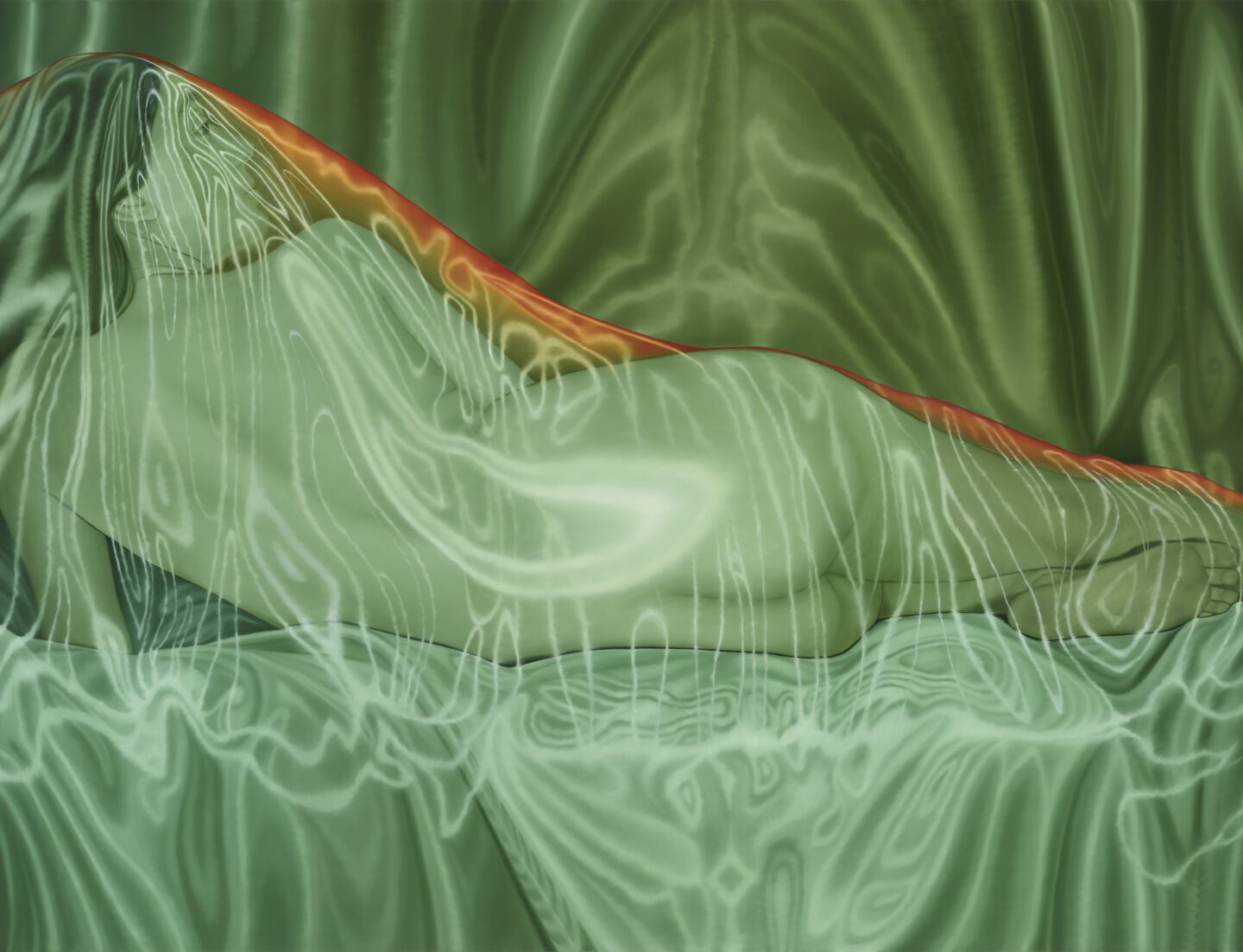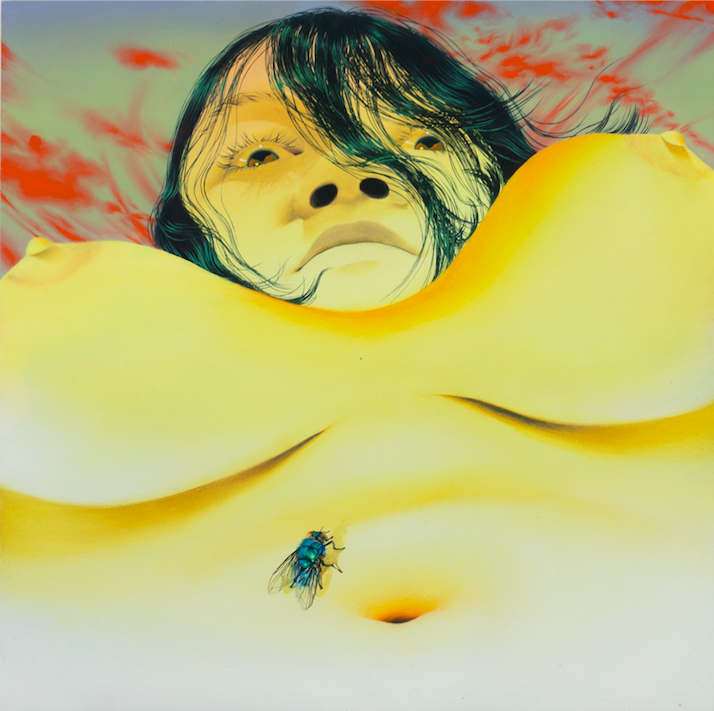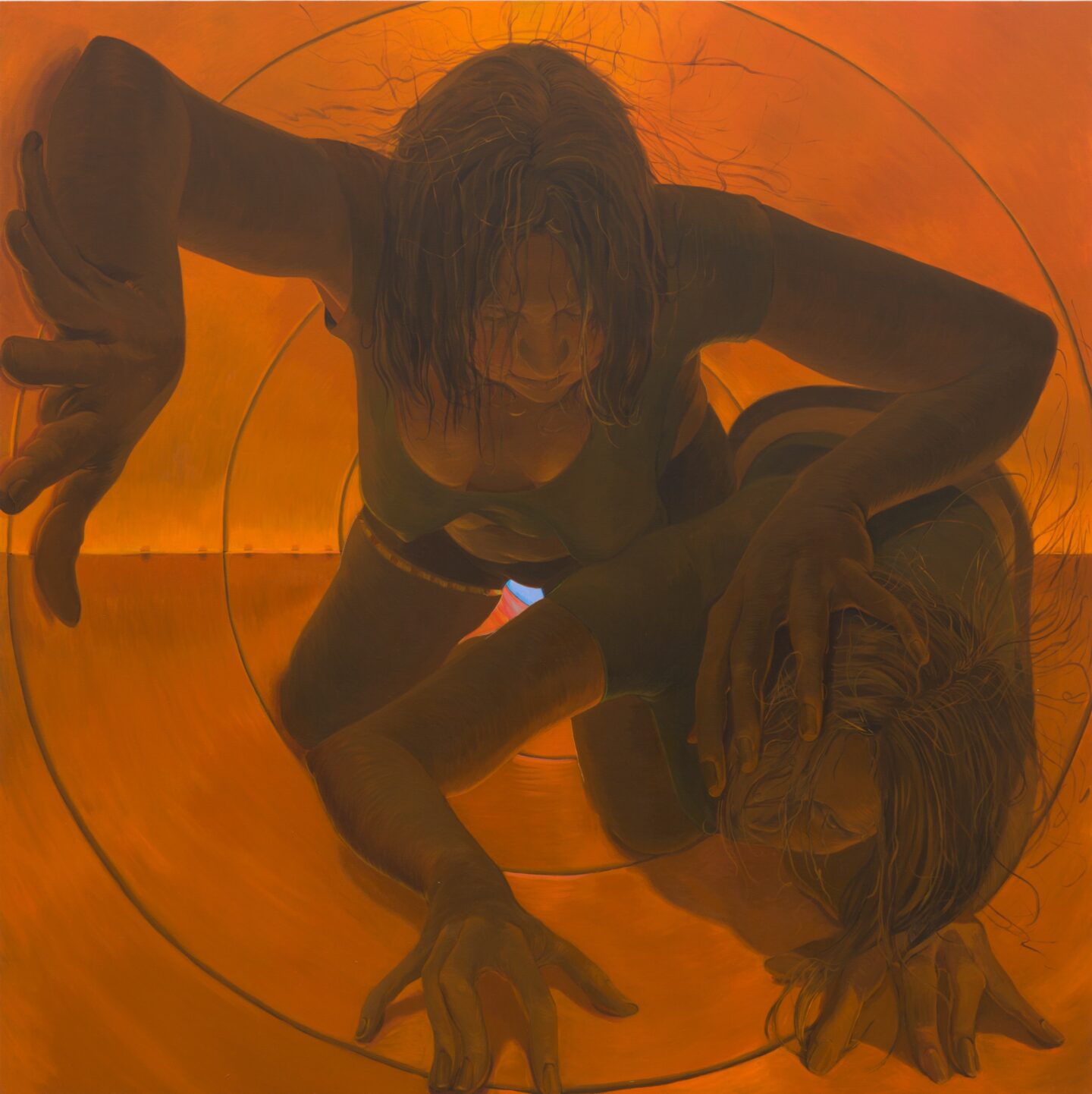28 Rising Female Stars at New Contemporary Space in Dallas

The Green Family Art Foundation’s impressive art collection will showcase 28 exciting artists at their new massive contemporary art space in Dallas. From names such as Ana Benaroya, Antonia Showering, to Issy Wood, the Foundation’s latest show is nothing short of spectacular.
In over 25 years of art collecting experience across generations, the Green Family has amassed an impressive collection of contemporary art featuring over 350 works by more than 200 artists, including many who are among the most sought-after names of the last decades.
Just last year they decided to share their collection with the public and are now opening a new permanent space in the downtown Dallas Arts District, just across the street from the Nasher Sculpture Center and the Crow Museum of Asian Art, and two blocks from the Dallas Museum of Art. The choice of opening their foundation in their hometown was specifically aimed at providing the local community new opportunities to approach the latest trends of contemporary art, and expanding their idea of contemporary art beyond the primarily white male names that have long dominated the local museums and art institutions.
After a show dedicated to black artists titled “Black Bodies-White Spaces” the Green Family Art Foundation is now opening a show titled: “Women of Now: Dialogues of Memory, Place & Identity” entirely dedicated to up-and-coming talented women artists, opening on February 12th until May 22nd of this year.
We talked with the two curators Clare Milliken and Bailey Summers about the show, and Eric Green on the foundation’s mission.

Let’s start from the show: Name the women artists who are part of the show. Are they all in your collection?
Bailey Summers: There are twenty-eight incredibly talented female artists in Women of Now: Dialogues of Memory, Place & Identity. The artists included in the exhibition are Caroline Absher, Hayley Barker, Ana Benaroya, Coady Brown, Lucy Bull, Somaya Critchlow, Dominique Fung, Louise Giovanelli, Sasha Gordon, Ania Hobson, Rachel Jones, Cheyenne Julien, Aubrey Levinthal, Hannah Levy, Danica Lundy, Maud Madsen, Rute Merk, Jenny Morgan, Anna Park, Lauren Quin, Hannah Lupton Reinhard, Danielle Roberts, Antonia Showering, Brea Weinreb, Anna Weyant, Lily Wong, Issy Wood and Michaela Yearwood-Dan. Out of the twenty-eight artists, twenty-five are part of the collection.
What was the main source of inspiration for this title and how does this relate to the selection of works?
Clare Milliken: The main source of inspiration for this title are the women themselves. Each of these artists, in their own unique ways, are contributing to the zeitgeist of this moment. Their individual voices are clear and distinctive. They are sharing their stories, and speaking to the cultural climate of today through their artwork. And when their work is put into conversation with one another, they become a resounding anthem, leaving an indelible mark on this moment in time, making them Women of Now.
BS: All of these women are living and working in the same social, political and economical period, yet they are all grappling with and working through their own lived experiences. This show is unique in that there is a little something for everyone.

Is there a specific art piece you’re very excited to show in this exhibition?
CM: We are beyond delighted to work with so many remarkable artists in this exhibition, but I am particularly excited about Jenny Morgan’s Reclining Portrait of Simone Gabriel, 2022. When I encounter Morgan’s work, I cannot help but be mesmerized by her masterful command over paint, both from a technical and emotional standpoint. Morgan possesses an astounding ability to infuse a radiant luminosity into her paintings. In this contemporary odalisque, Morgan combines a classic art historical trope with a tender rendering of a dear friend to transport her viewers to a spiritual experience.

BS: A loaded question as they are all wonderful and unique works in their own rights. Growing up, I have always felt like young girls were supposed to know how to fix our problems before they became problems. Shave our legs, navigate puberty, learn how to fit in, wear a bra, the list goes on. Sasha Gordon’s Interloper, a generous loan from Pamela and David Hornik is small in scale, but resounding. The work immediately sparked this adolescent angst and awkwardness within me. Gordon utilizes this unsettling perspective where the young female figure is wide-eyed, looking down at her body, watching this invasive fly walk across her stomach. It is uneasy, it is provoking, it is magical — it is growing up.

We know that the Green Family has long collected and championed women artists. Young and emerging artists such as Dana Schutz and Nicole Eisenmann were some of the very first to be acquired when your collection started to expand from after American Impressionism and Modernism toward Contemporary Art. Why this specific focus?
BS: As the Greens began to move towards collecting contemporary art, they realized that many living female artists were incredibly important, influential and talented, yet underrepresented and undervalued. Their voices, their work deserves our attention now and to be in the annals of art history. The Greens value developing meaningful relationships with the artists they collect as well as championing their careers not only through acquisitions but also museum loans, donations, and other exposure and advocacy.

Then your collection also started to cover different generations of Women artists, who had been overlooked by art history. Can you name a few others in the collection?
CM: The Greens also have incredible works by many additional female artists, including but not limited to Joan Semmel, Alice Neel, Maria Lassnig, Etel Adnan, Virginia Jaramillo, Betye Saar, Helen Frankenthaler, Carol Bove, Jennifer Packer, Julie Mehretu, Amy Sherald, Claire Tabouret, and Bernadette Despujols. Within the collection, there is this incredible interplay between established and emerging artists, which highlights how the earlier generations’ legacy lives on in new ways within the younger.

Your collection has focused on other underrepresented groups, such as LGBTQ+ or artists from black diaspora, to whom your last exhibition was dedicated. How has the community in Dallas responded so far to your diverse representation?
CM: The community response to the foundation has been exceedingly positive. Since opening our doors in October 2021, nearly 1,000 people have visited the Green Family Art Foundation. People regularly engage with us on social media, and we have received wonderful local press coverage from the Dallas Morning News, the Dallas Observer and Patron Magazine. After experiencing the art and hearing of our future programming, our visitors share their appreciation for what we are doing, their admiration for what is on view, and express their excitement for coming back in the future.

We know that the Green Family has also always believed in an “active idea” of collecting art, directly supporting artists careers through donations and loans, as well as financing exhibitions or acquisitions grants. This is something much more common today with collectors, and makes contemporary art collecting much closer to the old model of art patronage, as the one carried out by the Medici in the Renaissance. What’s your view on this aspect of collecting art and what are the reasons for the Green Family collection to do it?
Eric Green: We believe it is very important to support institutions so the public will be able to see, appreciate and learn about art and artists. When we first began to collect, the standard model to facilitate institutional acquisitions of artworks was gifting to museums upon the death of collectors. This testamentary gift structure generally occurred via trust or will, and sometimes through an intermediary such as a private foundation. Promises that were made to institutions through this process were generally not enforceable, however, even if there was a written understanding between the institution and the collector. Moreover, the testamentary gift arrangement meant that the work would not be possessed by the museum, and generally not seen by the public for many years, which negatively affected not only the public, but, also the artists.
Because of this, Adam Green, our son who is a NYC based art advisor, developed a process where gifts would be made to institutions during the donor’s lifetime, often immediately, and that the collector would receive a priority allocation of a replacement work in the future. There came to be many iterations of this process, from an immediate and contemporaneous acquisition to one that would take place over time, to one of unspecified duration (a “best efforts” promise to receive a replacement piece). All of these type of gifts were much more museum friendly than the old testamentary gift structure, but, they did often require the collector to take risk that he or she would not receive a replacement work at some time in the future. When this did not occur, because, for example, when an artist left a gallery and went to a second gallery which would not honor the first gallery’s commitment, the collector, and not the museum, would be left with no recourse. Further iterations now involve commitments by the artists themselves in order to try and avoid this latter type of issue. But, in summary, the new process is much more friendly to the museums, the public, and the artists themselves, than was the old way of gifting to museums was.

Tell us a little more about your new space and how you’re looking to further engage the local community.
EG: This will enable us to coordinate with the most important museums of Dallas as well as gain foot traffic from those otherwise attending shows at those museums or from those enjoying the nearby Klyde Warren Park. It also increases the size of our space by 50% which allows us to have multiple shows simultaneously. We are now, for example, speaking to other museums and galleries about having shows travel to Dallas. It really opens up our programming opportunities in a major way.



